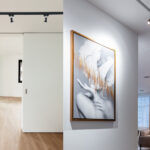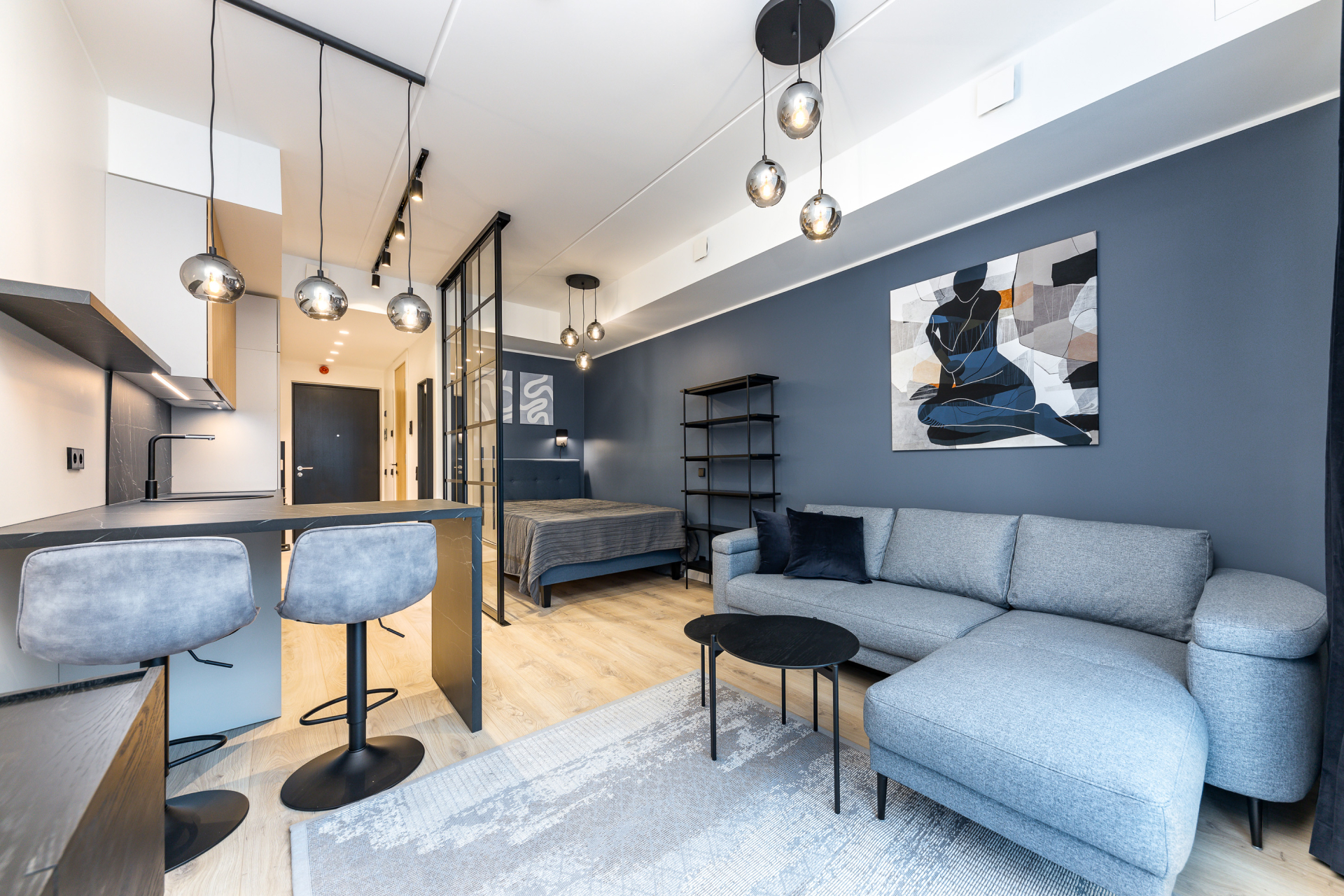
Let’s talk about illuminating interiors with an interior designer
Successfully illuminating an interior may not be as straightforward as it seems at first glance. Often, you may encounter rooms where the light is directed towards your face, or there isn’t enough light on the work desk. Another separate issue is design – what can be done to ensure that the lamps and lights chosen for the home will look stylish and tasteful even years later. We posed some questions to Kadrin Kalvet, an experienced interior designer who dares to recommend solutions that always work and draws attention to common mistakes that can easily be avoided.
HOW TO USE LIGHTS IN AN OPEN SPACE WHERE THE ROOM NEEDS TO SERVE MULTIPLE FUNCTIONS – WORKING ON THE COMPUTER, EATING, RELAXING?
When planning lamps and lights, the primary consideration should be the function of the room. Ideally, this should be taken into account already during the construction phase. In that case, unpleasant surprises are avoided later – for example, that the light fixture intended for the dining table is 20 cm off-center, or that the kitchen, where the most light is needed, is completely dark. Not long ago, it was common practice to simply hang a lamp in the center of the room. However, both spaces and types of lighting have changed, and many new solutions have been added. If the different usage needs of an open space are already known – such as dining, working, sleeping, etc. – then the main activities of these zones should be taken into account. It is essential to create good general lighting, but it is also important to illuminate focal points separately so that light can be divided into groups as desired. I believe that behind every truly good lighting solution is well-planned general lighting that is not glaring. In zones where relaxation is more common (bedroom and living room), it is preferable to choose lamps and lights whose brightness can be adjusted. Floor or table lamps are also suitable for creating a relaxing atmosphere. It is very easy to create coziness and additional light in the living room with a floor lamp.
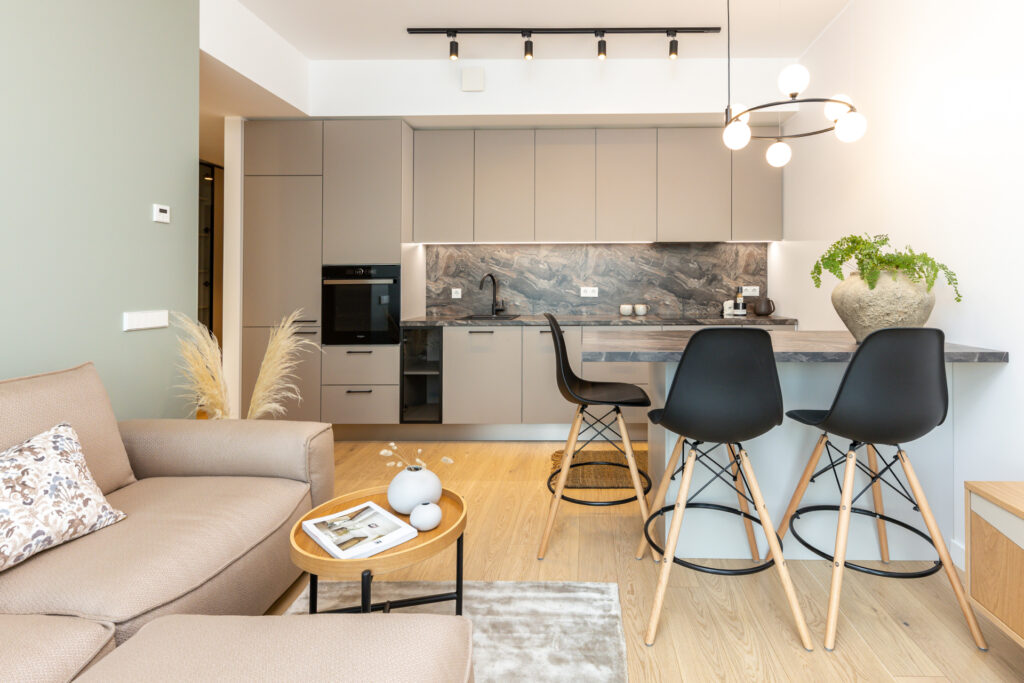
HOW TO INTEGRATE DIFFERENT TYPES OF LIGHT FIXTURES? WHAT SHOULD BE CONSIDERED WHEN MAKING CHOICES?
I love track lights. They are almost invisible elements on the ceiling, which can provide perfect general lighting and direct spotlights to illuminate necessary details. One convenient aspect of track lights is that if the lighting solution in a room hasn’t been well thought out beforehand, this system can bring light exactly where it’s needed and can also be used on ceilings where recessed lights don’t always fit. Later, various pendant lights, wall lights, etc., can be added to it, which then suit the specific room and give it the desired design idea. For a consistent harmonious result, the lights used in a room should be from the same “family.” But otherwise, you should follow the same style, and adhere to the tone of metal, glass, or other material. Of course, this doesn’t mean that you can’t use a striking light fixture that becomes the “pearl” of the room; however, in that case, the other lights in the room should recede into the background and remain rather inconspicuous.
CAN YOU HIGHLIGHT ANY UNWRITTEN RULES WHEN CHOOSING LIGHT FIXTURES THAT, WHEN FOLLOWED, RESULT IN A HARMONIOUS SPACE?
There probably isn’t a specific form or type of light fixture that works in every design, or I can’t point it out. Rather, everything should work together and create a harmonious picture. You don’t always have to chase trends in everything but rather ensure that things fit together. You should also consider what tone of detail is used in the overall interior design and integrate that tone into the lighting fixtures. For example, if black details are still trendy, then there could be a black nuance in the light fixture, such as metal parts or the cord. Generally, the same materials are used in lights as are currently preferred in interior design overall – marble details, metal, and natural materials. The shapes should be rather rounder and softer. Additionally, to ensure that the selected lights and lamps transmit cozy light at home, the right tone of the light source should be chosen. At home, it should be warmer and softer so that the overall impression is mellower and more pleasant.
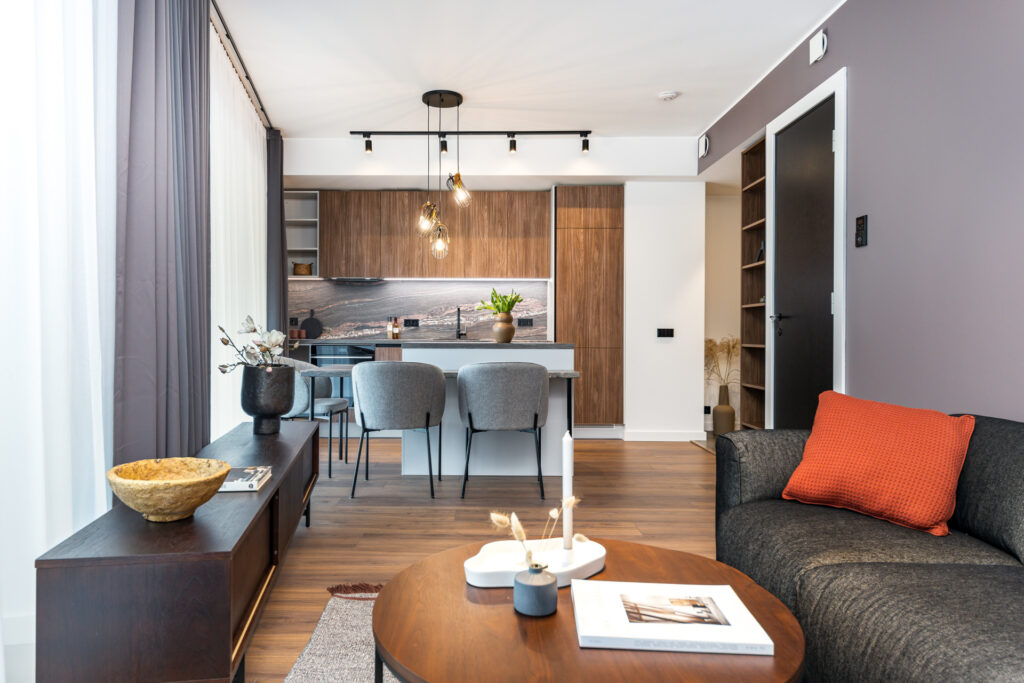
IS THERE A PRINCIPLE THAT PEOPLE TEND TO VIOLATE, SOMETHING YOU SEE IN HOMES AS AN INTERIOR DESIGNER THAT BOTHERS YOU?
Although this doesn’t concern the style of light fixtures, it is annoying when very different light temperatures are used in one room. I believe that home lighting should be rather warm, i.e., 2700-3500K. For example, in living spaces, it could be 3000K, and in utility rooms and under kitchen countertops, 3500K. When buying lights, you should consider the room where the fixture will be installed. Often, it is only realized at home that the fixture is too small and doesn’t provide enough light, or for high ceilings, it doesn’t hang low enough, etc. It should be noted that when purchasing a new lamp for a cohesive interior, it should fit with everything else. Again, you should pay attention to the tone of metal and glass and the overall style. It should also be ensured that a pendant light doesn’t just hang in the middle of the ceiling but that there is some piece of furniture beneath it. Lights that hold against the ceiling are suitable for general lighting – recessed lights, tracks, or flush-mount fixtures.
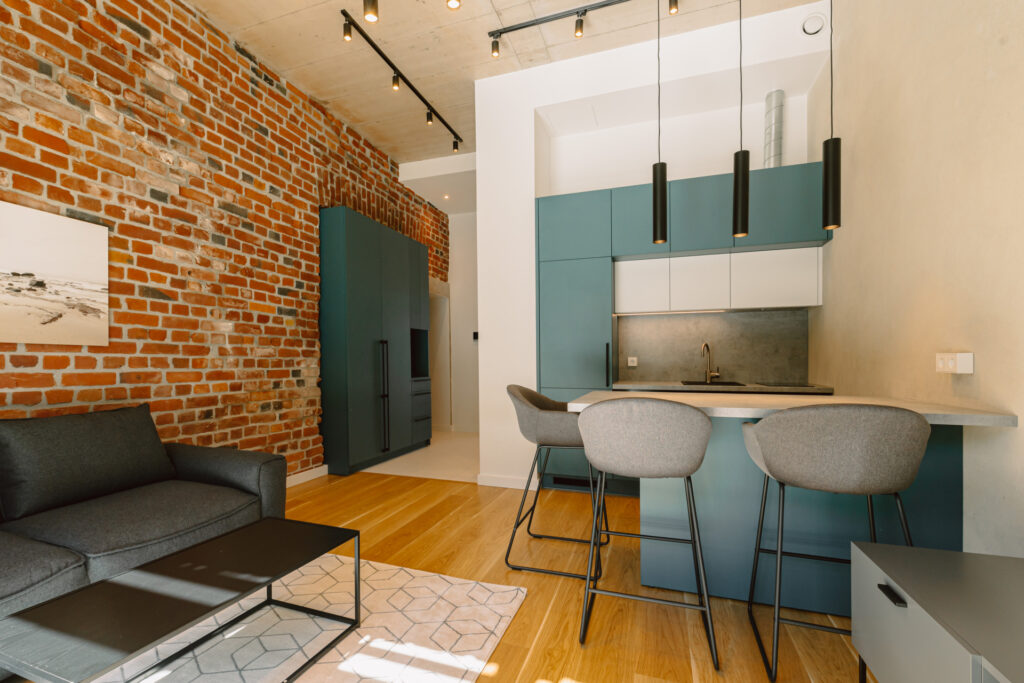
WHAT DO PEOPLE EXPECT FROM YOU REGARDING LIGHTING SOLUTIONS? ARE THERE ANY EXPECTATIONS AND DESIRES, OR DOES THE QUESTION OF LIGHTING REMAIN IN THE BACKGROUND?
Unfortunately, electricians are still often left to bring that wire just “somewhere,” and the issues aren’t deeply considered until light fixtures are selected, at which point the problems become apparent. I believe that the locations of light fixtures are still one of the most important stages at the beginning of an interior design project because thanks to light, the entire interior design comes to life, and the correct zones receive the right amount of light. Private clients who have already enlisted the help of an interior designer are more likely to trust and allow them to think technically as well. When it comes to selecting lights, the process is the same as with furniture and other details – ideas are gathered from Instagram and Pinterest, and there have been cases where the favorite light fixture determines the entire interior design.
You can get acquainted with Kadrin’s designed interiors and, if desired, contact her on her Instagram page.
USED PHOTOS: KODUINGEL
We are always happy to assist in creating any lighting solution from idea to implementation.
If you have an idea for designing your home lighting project, be sure to contact our consultants, and we can help you make it happen.

